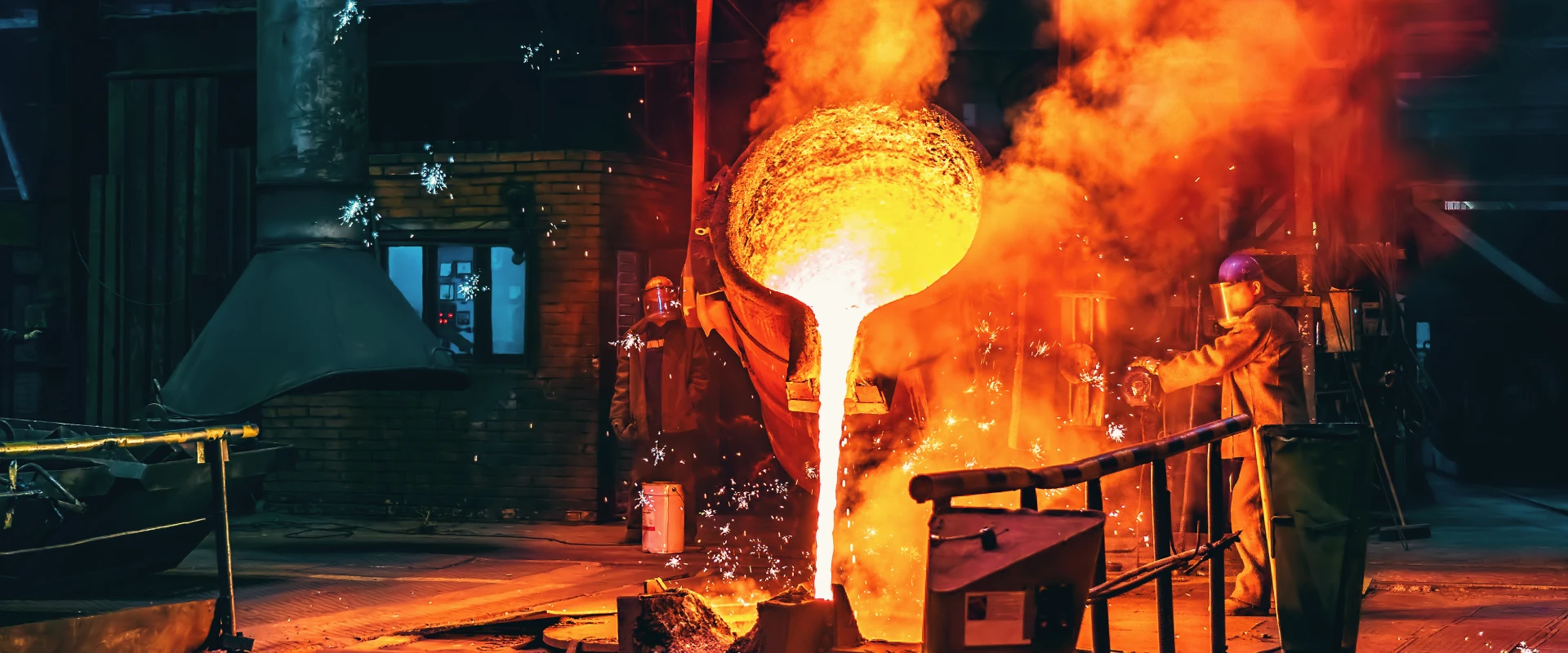Application Prospects of High-Nitrogen Stainless Steel in Pressure Hulls of Deep-Sea Probes
Deep-sea exploration is a journey into one of Earth’s most extreme environments. At depths of 3.000–11.000 meters (the average depth of the ocean is 3.688 meters, and the Mariana Trench reaches 10.929 meters), the pressure can be 300–1.100 times that of the surface—enough to crush a standard metal container like a soda can. The pressure hull, the “outer shell” of a deep-sea probe, is the only thing standing between the delicate equipment (and crew, for manned submersibles) and this crushing force. For decades, manufacturers have relied on materials like titanium alloys or high-strength steel for these hulls—but both have drawbacks: titanium is expensive and hard to machine, while traditional steel is heavy and prone to corrosion in saltwater.
Enter high-nitrogen stainless steel (HNSS). This alloy replaces some of the nickel in standard stainless steel with nitrogen, creating a material that’s strong, corrosion-resistant, and lighter than many alternatives. As deep-sea exploration pushes farther and deeper, HNSS is emerging as a game-changer for pressure hulls. We’re breaking down why this material matters, its unique advantages for deep-sea use, and the challenges that need to be solved to unlock its full potential.
Why Deep-Sea Probe Pressure Hulls Need Special Materials
First, let’s understand the demands of a pressure hull. It needs three key properties:
Exceptional Strength: To withstand thousands of pounds of pressure per square inch (psi). At 10.000 meters, the pressure is ~14.500 psi—so the hull material must have a tensile strength of at least 1.000 MPa (145.000 psi) to stay intact.
Corrosion Resistance: Seawater is loaded with salt and microorganisms that eat away at metal. A hull that corrodes over time will develop weak spots, leading to leaks or failure.
Lightweight: Every extra pound of hull weight means less room for scientific equipment or battery power. For unmanned probes, this limits how long they can stay underwater; for manned submersibles, it complicates launch and recovery.
Traditional materials fall short here. Titanium alloys (like Ti-6Al-4V) have the strength and corrosion resistance but cost 30–50 per pound—making a large hull prohibitively expensive. High-strength steel (like HY-100) is cheaper but weighs 7.8 g/cm³ (vs. titanium’s 4.43 g/cm³) and needs extra corrosion coatings that add weight and maintenance. HNSS, though, checks more boxes than either.
What Is High-Nitrogen Stainless Steel, and Why It’s Good for Deep-Sea Hulls
High-nitrogen stainless steel is a type of austenitic stainless steel where nitrogen (0.5–1.5% by weight) replaces nickel as the main alloying element. Nickel is what gives standard stainless steel (like 304) its ductility and corrosion resistance, but nitrogen does it better—with added strength. Here’s how HNSS stacks up for deep-sea pressure hulls:
1. Strength That Rivals Titanium (at a Lower Cost)
Nitrogen atoms fit tightly into the steel’s crystal structure, making it much stronger than standard stainless steel. HNSS grades like X2CrNiMoN22-5-3 have a tensile strength of 800–1.000 MPa—on par with Ti-6Al-4V—but cost 40–60% less. For a pressure hull, this means thinner walls (since the material is stronger) without sacrificing safety. A thinner hull cuts weight: a 5-meter diameter HNSS hull might weigh 20% less than a steel hull of the same strength, freeing up space for more sensors or longer-lasting batteries.
Example: A team at the Chinese Academy of Sciences tested a small HNSS pressure hull (1-meter diameter) at 7.000 meters depth. The hull withstood 70 MPa of pressure (~10.000 psi) with no deformation—proving it could handle mid-ocean depths. The same hull made of HY-100 steel would have been 30% heavier.
2. Corrosion Resistance That Beats Traditional Steel
HNSS’s nitrogen content boosts its corrosion resistance in two ways:
It strengthens the passive oxide layer (the thin film that protects stainless steel from rust) so it doesn’t break down in saltwater.
It reduces “pitting corrosion”—tiny holes that form when saltwater attacks weak spots in the metal.
In seawater tests, HNSS showed 50% less pitting than standard 316L stainless steel after 1.000 hours of immersion. For deep-sea probes, which can stay underwater for months at a time, this means less maintenance and a longer hull lifespan. Unlike traditional steel, HNSS doesn’t need extra coatings (like epoxy or zinc) that can chip off at high pressure—saving weight and avoiding coating-related failures.
3. Ductility for Safety (Even When Bent)
Deep-sea pressure doesn’t just push—waves and currents can also bend or twist the hull. Brittle materials (like some ceramics) would crack under this stress, but HNSS is ductile. It can stretch or bend slightly without breaking, absorbing energy from impacts or pressure changes. This is critical for manned submersibles: if the hull deforms a little instead of cracking, it gives the crew time to surface safely.
Tests show that HNSS retains 80% of its ductility even at -20°C (common in deep, cold oceans)—something traditional high-strength steel can’t match (it becomes brittle at low temps).
Current Challenges Holding HNSS Back (and How to Solve Them)
HNSS isn’t perfect—there are still hurdles to widespread use in deep-sea pressure hulls:
1. Manufacturing Difficulties (Getting Nitrogen into the Steel)
Adding nitrogen to steel is tricky. It has to be done in a high-pressure furnace (to keep nitrogen dissolved in the molten metal), and if the process isn’t controlled, nitrogen bubbles form in the steel. These bubbles create pores, which weaken the hull—at 10.000 meters, even a tiny pore could expand into a leak.
Solution: New “pressure casting” techniques let manufacturers add nitrogen more evenly. A German company recently developed a furnace that injects nitrogen at 50 atmospheres of pressure, reducing pore formation by 90%. The result is HNSS with uniform strength—perfect for pressure hulls.
2. Welding Challenges (Keeping Strength at Seams)
Pressure hulls are rarely one solid piece—they’re made of panels welded together. But welding HNSS can cause nitrogen to escape from the heat-affected zone (the area around the weld), weakening it. A weak weld is a disaster in deep water: it’s where the hull is most likely to fail.
Solution: “Low-heat welding” methods like laser beam welding or electron beam welding heat the steel less, so less nitrogen escapes. A Japanese shipyard tested laser-welded HNSS panels and found the welds retained 95% of the base metal’s strength—good enough for deep-sea use. They’re now building a 3-meter HNSS pressure hull for an unmanned probe using this method.
3. Limited Large-Scale Production (Not Enough Suppliers)
Right now, only a handful of companies (mostly in Europe and Asia) make HNSS in large sheets or plates—needed for big pressure hulls. This limits availability and keeps costs higher than they could be.
Solution: As demand grows (thanks to more deep-sea exploration projects), more manufacturers are investing in HNSS production. In 2023. a U.S. steel mill announced a $50 million plant to make HNSS plates up to 5 meters wide—large enough for manned submersible hulls. This should lower costs by 20–30% in the next 5 years.
Real-World Progress: HNSS Hulls in Action
HNSS is already being tested in real deep-sea missions:
China’s “Fendouzhe” Deep-Sea Probe: The latest version of this unmanned probe (which reached 10.909 meters in 2020) uses HNSS for some of its smaller pressure chambers (holding sensors). Engineers reported no corrosion or leaks after 20 dives—better than the titanium chambers used in earlier versions.
Norway’s “DeepSeas” Manned Submersible: A Norwegian team is building a 2-person submersible with an HNSS pressure hull. The hull is 4 meters long, 2 meters wide, and designed to dive to 6.000 meters. Testing in a pressure tank (simulating 6.000 meters) showed the hull deformed less than 1 mm—well within safety limits. The submersible is set to launch in 2025.
Why HNSS Could Transform Deep-Sea Exploration
If HNSS overcomes its manufacturing challenges, it could make deep-sea exploration more accessible:
Cheaper Probes: Lower material costs mean more research teams can afford to build deep-sea probes, leading to more discoveries (like new species or underwater mineral deposits).
Longer Missions: Lighter hulls mean more battery power, so probes can stay underwater for weeks instead of days—collecting more data.
Safer Manned Dives: HNSS’s strength and ductility make it ideal for manned submersibles, where safety is non-negotiable. It could replace titanium as the go-to material for deep-diving craft.
Conclusion
Deep-sea exploration needs materials that can handle extreme pressure, corrosion, and weight limits—and high-nitrogen stainless steel is rising to the challenge. Its strength, corrosion resistance, and lower cost make it a better option than traditional titanium or steel for pressure hulls. While manufacturing and welding challenges remain, new technologies are solving them fast.
In the next 10 years, we’ll likely see more deep-sea probes—both unmanned and manned—with HNSS pressure hulls. This material won’t just make exploration cheaper and safer; it’ll let us go deeper, stay longer, and learn more about the mysterious world beneath the waves. For anyone who cares about unlocking the ocean’s secrets, HNSS is more than a metal—it’s a key to the deep.

